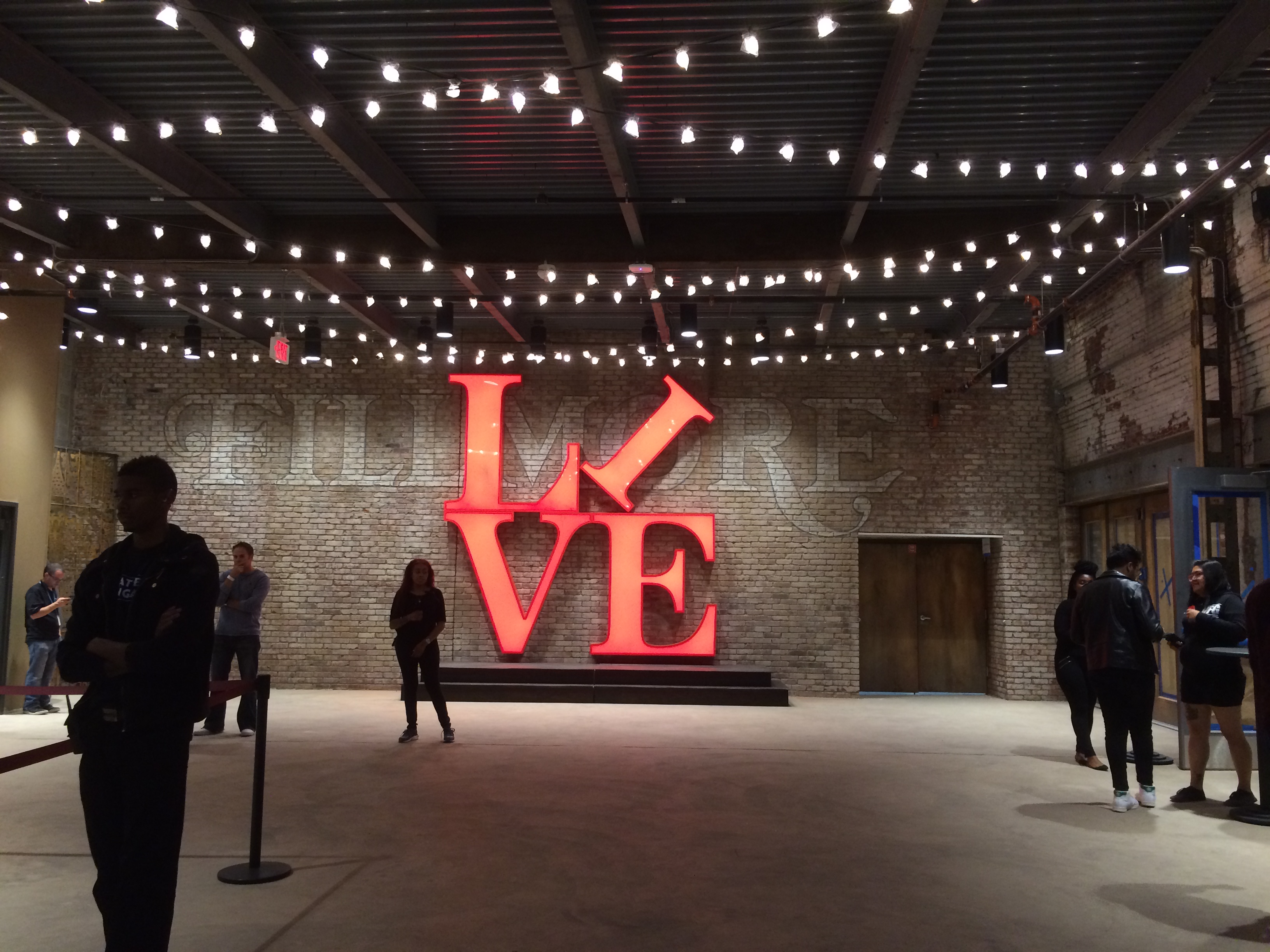
EwingCole-interior designed Fillmore Philadelphia becomes Live Nation’s newest landmark entertainment venue
PHILADELPHIA (Oct 2015) – Live Nation opens new Fillmore, interior designed by EwingCole, in Philadelphia, Pennsylvania. Located in the heart of Philadelphia’s trendy Fishtown neighborhood, the former Ajax Metal Company building (circa 1893) has been creatively adapted into a 40,000 s.f., state-of-the-art, live music venue expected to provide cultural and history-making events.
“The distinctive features of Philadelphia, the raw intensity of the existing factory, and the Fillmore’s legacy inspired the interior design, resulting in a one-of-a-kind contemporary entertainment destination,” said Craig Schmitt, RA, principal at EwingCole.
The two-story atrium features a recreation of Robert Indiana’s famous LOVE sculpture where the O is swapped for an I. Expected to create a great photo-op for guests, this new LIVE sculpture, reflects the founding ideals of Fillmore founder and legendary music promoter, Bill Graham, who died in 1991.
Beyond the atrium is Ajax Hall, which is open to both ticketed and non-ticketed guests. This unique space provides a central location for non-concert events and activities and also functions as the connector to the 2,500-capacity main event space. Design features of Ajax Hall include the following:
- An original 1960’s era VW van, painted with the faces of music legends Jimi Hendrix and John Lennon, will be the focal point for Fillmore branded merchandise sales.
- The Ajax Bar, designed with an industrial feel, includes salvaged fire doors from the Ajax factory on the die wall, an array of overhead lights on dangling “Fillmore Red” cords with Edison bulbs, and a liquor display made of antique mirrors and reclaimed wood shelving with mill finished steel pipe fittings.
- An old-school marquee sign will announce the upcoming concerts and events.
- A 20-foot high feature art installation dubbed the “Fillmore Flag” – a Betsy Ross-style flag made of a collage of hundreds of iconic Fillmore posters wheat-pasted together.
“What excited us most when conceptualizing the Fillmore Flag was the opportunity to unite one of Philadelphia’s most recognizable symbols with that of the Fillmore’s famous poster artwork,” said Shannon Noon, interior designer at EwingCole.
The Fillmore Philadelphia contains the brand’s signature elements. The walls of the main event space are lined with the “Fillmore red” curtains, parted in places to reveal actual graffiti painted on the walls since it was abandoned in the 1950s. The appearance of the street art is constantly varying via the use of color-changing lighting. Hanging from the ceiling are the Fillmore signature glass/chrome chandeliers juxtaposed against the rusted steel roof trusses of the century-old factory. Graham included the large chandeliers in Fillmores West and East because he felt that they gave the venues a majestic quality that added to the fan experience.
At the rear of the main event space is a 55-foot long feature bar as well as two smaller bars located along the side with views to the stage. The bar fronts are crafted with riveted steel reminiscent of the nearby Benjamin Franklin Bridge.
Above the main event space is the mezzanine. This area includes fixed-seating for VIP ticket holders as well as a tiered standing area with drink rails for general admission guests. President of Live Nation’s House of Blues Entertainment Division Ron Bension said, “The Fillmore Philadelphia will feature the best sound system of any club its size, unparalleled sightlines, and remarkable food and beverage, making it more than a place for a concert. It will be a true experience.”
Behind the mezzanine is the Circle Bar, named for the concentric, mosque-inspired chandelier centered over the island bar. This VIP area includes a selection of seating choices including semi-private banquettes, clusters of upholstered seating, and a variety of bar stools, some made from recycled bicycle parts. Wood and metal pieces of the original Ajax building were reused in the construction of the bar and furnishings.
Within the Circle Bar is the best view of the factory’s iconic smokestack. It begins on the first floor, extends prominently through this space and continues up through the roof, visible from I-95. Its rusted patina has been preserved, while red LED lighting has been added inside the portholes creating the illusion that it is still in use.
The new Fillmore is two venues in one. Since the main stage will not be in use every night, flexibility has been designed into this area so that it can become a 450-capacity venue, The Foundry, with a stage for showcasing smaller acts. Designed with state-of-the art sound and lighting, The Foundry is expected to host hundreds of events annually.
On October 1st, the Fillmore’s seventh venue in the United States will open with Philadelphia-natives, Hall & Oates, playing to a sold-out crowd.



Recent Comments